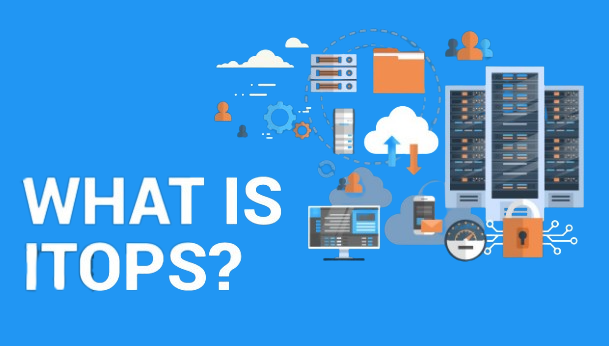
What is ITOps?
ITOps stands for IT Operations. It is a discipline that encompasses the people, processes, and tools used to manage and maintain IT infrastructure. The goal of ITOps is to ensure that IT systems are running efficiently and effectively, so that they can support the business’s needs.
Why We Need ITOps?
ITOps is essential for any organization that relies on IT systems to operate. Without ITOps, organizations would be at risk of outages, security breaches, and other problems that could disrupt their business. ITOps helps to ensure that IT systems are reliable, secure, and compliant with regulations.
What is the Advantage of ITOps?
Advantages of ITOPS include:
1. Improved service availability: ITOPS ensures that IT services are readily available to users, minimizing service disruptions and downtime.
2. Better efficiency: Through automation and standardization, ITOPS helps in streamlining processes, reducing manual effort, and improving overall efficiency.
3. Faster problem resolution: ITOPS provides proactive monitoring and alerting, enabling quicker identification and resolution of IT issues.
4. Enhanced scalability: With ITOPS, organizations can better handle the increasing complexities and demands of a growing IT infrastructure.
5. Cost savings: By optimizing IT infrastructure, ITOPS can contribute to cost savings through reduced operational expenses and enhanced resource utilization.
6. Improved customer satisfaction: ITOPS focuses on delivering reliable and high-quality IT services, leading to greater customer satisfaction.
What is the feature of ITOps?
The key features of ITOps include:
- Automation: ITOps uses automation to streamline tasks and processes, improve efficiency, and reduce costs.
- Monitoring: ITOps uses monitoring tools to track the performance of IT systems and identify problems early on.
- Analytics: ITOps uses analytics to analyze data from monitoring tools to identify trends and patterns that can help to improve IT operations.
- Collaboration: ITOps requires collaboration between IT staff, business users, and other stakeholders.
- Continuous improvement: ITOps is a continuous improvement process that is always looking for ways to improve the efficiency and effectiveness of IT operations.
What are the Top 10 Use Cases of ITOps?
- Network monitoring and management: Monitoring network performance, identifying and resolving connectivity issues, and optimizing network infrastructure.
- Server and infrastructure management: Managing server resources, ensuring optimal performance, and maintaining the availability of critical infrastructure components.
- Application performance monitoring: Monitoring application performance, identifying performance bottlenecks, and optimizing application resources.
- Incident and problem management: Handling IT incidents, diagnosing and resolving problems, and implementing preventive measures.
- Security monitoring and management: Monitoring and managing security events, identifying and responding to security threats, and ensuring data protection.
- Cloud infrastructure management: Managing and optimizing cloud resources, ensuring scalability, and optimizing costs.
- DevOps integration and automation: Integrating development and operations processes, automating deployment and configuration tasks, and improving collaboration.
- IT asset management: Tracking and managing IT assets throughout their lifecycle, including procurement, deployment, maintenance, and retirement.
- Capacity planning and optimization: Forecasting resource requirements, optimizing resource allocation, and ensuring scalability to meet business demands.
- Compliance and governance: Ensuring compliance with industry regulations and internal policies, and maintaining proper governance of IT systems and operations.
How to Implement ITOps?
There are many different ways to implement ITOps. The best approach will vary depending on the specific needs of the organization. However, some common steps include:
- Define the scope of ITOps: This includes identifying the IT systems and processes that will be managed by ITOps.
- Gather data: This includes collecting data from monitoring tools and other sources.
- Analyze data: This involves using analytics to identify trends and patterns in the data.
- Implement improvements: This includes making changes to IT systems and processes to improve their efficiency and effectiveness.
- Continuously monitor and improve: ITOps is a continuous improvement process, so it is important to continuously monitor and improve the implementation.
How to Get Certified in ITOps?
There are a number of ways to get certified in ITOps. Here are some of the most common:
- Take a certification exam: This is the most common way to get certified. There are a number of different certification exams available, so you can choose one that is right for your level of experience and skills.
- Complete a training course: There are many training courses available for ITOps certification. These courses can help you learn the skills and knowledge you need to pass the certification exam. Here are some most popular website for providing Certification training courses: DevOpsSchool.com , scmGalaxy.com , BestDevOps.com , Cotocus.com
- Get hands-on experience: This is often the best way to learn ITOps. You can get hands-on experience by working in an IT operations role or by volunteering to help with IT projects.
How to Learn ITOps?
There are many different ways to learn ITOps. Here are some of the most common:
- Take online courses: There are a number of online courses available for ITOps. These courses can be a great way to learn the basics of ITOps at your own pace. Here are some most popular website for providing Certification courses: DevOpsSchool.com , scmGalaxy.com , BestDevOps.com , Cotocus.com
- Attend training workshops: There are many training workshops available for ITOps. These workshops can be a great way to learn from experienced professionals and get hands-on experience.
- Read books and articles: There are a number of books and articles available on ITOps. These resources can be a great way to learn about specific topics in ITOps.
- Get hands-on experience: This is often the best way to learn ITOps. You can get hands-on experience by working in an IT operations role or by volunteering to help with IT projects.

 Starting: 1st of Every Month
Starting: 1st of Every Month  +91 8409492687 |
+91 8409492687 |  Contact@DevOpsSchool.com
Contact@DevOpsSchool.com